How to fight the spread of viruses in office buildings? Correct air exchange is crucial
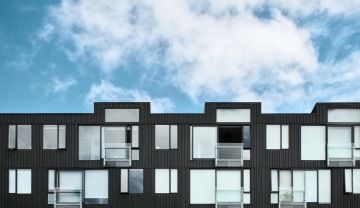
An office space must be designed with a focus on the productivity and health of the people who work in the office. In addition to interior design, the management of office buildings also plays an important role. Ensuring proper ventilation, efficient use of air-conditioning and good levels of humidity in the office can significantly reduce the spread of infectious substances, ensuring better health for workers. In the current situation, most companies have prioritized home office, but after the pandemic subsides, they will naturally return to the office. So, how should office buildings effectively ensure air exchange?
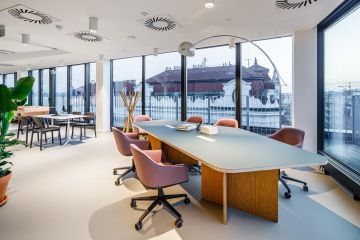
Pay attention to the heat exchanger
Ventilation in office buildings usually works only with fresh air from the outside, so there is no risk of infection from the office's waste air. According to available information, the novel coronavirus is not transmitted purely by air, but mainly by droplets or dust particles. However, a problem can arise if a so-called rotary heat exchanger is used in the building to recover heat.
A rotary recovery
(sometimes also regenerative) heat exchanger is designed to transfer heat or moisture. The basic part of the rotary heat exchanger is a rotor, one half of which extends into the exhaust air flow and the other half into the supply air. The rotation of the rotor then transfers the accumulated thermal energy and humidity from the exhaust air to the supply air. This type of heat exchanger is efficient and popular especially due to its very fast return on investment. Unfortunately, there is contamination of the supply air from the outside with the exhaust air from the office, and therefore there is a risk of increasing the concentration of infectious substances in the supply air.
Therefore, it is recommended to operate the air handling units without the rotary heat exchanger on, especially where people are actually present. The same is true of systems that use exhaust air circulation, where the system needs to be operated using 100% fresh air at this time.

The main thing is fresh air supply
To reduce the spread of infection, it is necessary to ensure as much regular fresh air supply to the offices as possible. Ventilation should work continuously in buildings (if possible), i.e. overnight and at weekends when no one is present. It is recommended to open windows as much as possible both in buildings with mechanical ventilation and especially in buildings without it. Yes, the temperature may get a little uncomfortable, but the supply of fresh outdoor air greatly helps to limit the concentration of infectious substances.
It is also a good idea to at least slightly reduce the number of employees in one office to ensure enough fresh air for each person. Every time you enter the office where someone was present, the employee should open the window for at least 15 minutes. Windows in office buildings need to be opened in all types of premises (except for the toilets, which we will discuss below) so that lateral flows across the building occur.
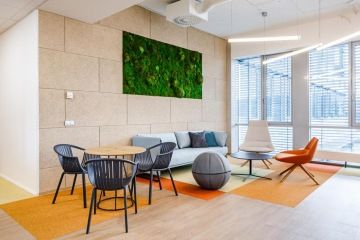
Humidity and temperature affect the virus only at extremes
The spread of some viruses can be limited by appropriate changes in humidity and temperature in the building. Unfortunately, according to available information, this does not apply to the novel coronavirus. The virus that is responsible for this year's pandemic thrives in a wide range of conditions and spreads easily even in places with 80% humidity or temperatures reaching 30 degrees Celsius. Similar conditions are of course totally unsuitable for longer stays in offices.
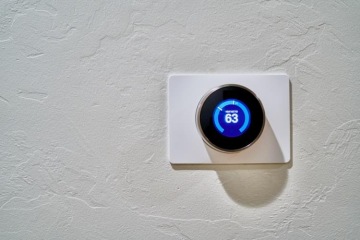
Central European conditions are an advantage for us
Therefore, in terms of the spread of infection it is not necessary to change the air-conditioning or humidity settings. In drier air, nasal mucous membranes may be more susceptible to infectious agents, but under Central European conditions, moisture inside buildings, even without special systems, usually remains at an acceptable level.
Maximum levels of filtration are not needed in offices
Air handling units in office buildings are usually equipped with two-stage filtration. A pocket or frame filter is located at both the fresh air outlet and the exhaust air outlet. The efficiency of filters and their use varies according to the type of building. For regular office operations, mainly filters of the following classes are used:
- G3, G4 (catches pollen or vapour)
- M5 (catches spores or cement dust)
- M6 (catches larger bacteria or germs on carrier particles)
- F7, F8 (catches fine dust that enters the human lungs)
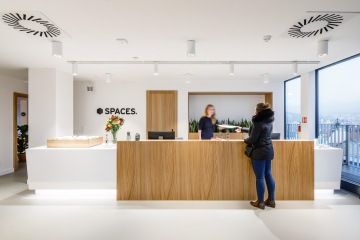
Outdoor air
HEPA and ULPA filters (class H and U) are used in the food and pharmaceutical industries or hospitals, where a higher degree of filtration is needed. They can also capture microparticles, i.e. aerosol and viruses. In conventional office buildings, it is not necessary and often even practically impossible to replace existing filters with a higher class. As we already know, airborne transmission of the novel coronavirus is not a major risk, so the spread of infection by air intake from outside is not a serious hazard.
The virus usually binds to larger particles, which the fine lower-class filters capture without problems. Occasionally, there may be slight contamination of the outside air during discharge.

Regular replacement of filters and cleaning of surfaces
The filters of air handling units should be changed regularly in office buildings. Even if they are not a source of contamination by themselves, clogged filters can reduce the flow of fresh air from outside and thus help to increase the concentration of viral particles in the office. Filters can be replaced according to the normal schedule, but more frequent inspection and replacement won't hurt. Where a rotary heat exchanger is installed, thorough cleaning and disinfection must be carried out more frequently.
Conversely, increased cleaning or disinfection of air ducts is not required. Viruses do not settle in the ventilation ducts and are carried away by a stream of air.
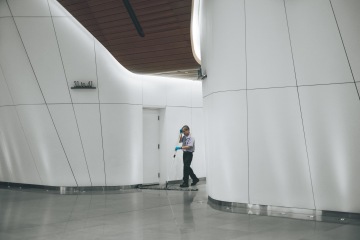
Repeated surface cleaning
In addition to cleaning the filters, building managers (or the employees themselves) should be aware of surfaces that are often touched by many people. The novel coronavirus seems to survive on different types of surfaces for several days. For this reason, it is often necessary to disinfect, for example, door handles in conference rooms, office kitchens and other places where direct and indirect contact with other people occurs.
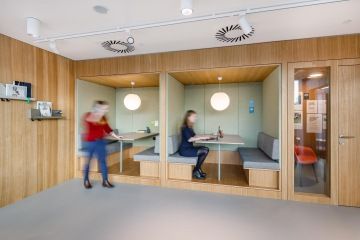
Necessary caution
The research paper from 2014 has shown that virus on door handles and desks can spread to 40 to 60% of surfaces in the whole building within two to four hours. Toilets especially require care, both in terms of air handling units and in terms of increased staff caution. Opened windows in the toilet could lead to contaminated air flowing to other rooms. Instead of opening windows, it is necessary to ensure constant air exhaust (24 hours a day) in the toilets.
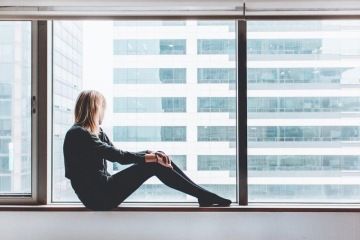
Reduction of the risk of infection
By adhering to all the above principles and maintaining distance between employees, the risk of infection in office buildings should be significantly reduced. A mass return to offices can be expected in late spring or early summer, when there should be no problem opening windows and ensuring a sufficient supply of fresh air. Of course, we should never forget the most basic defence against the virus: frequent handwashing and avoiding touching the face.